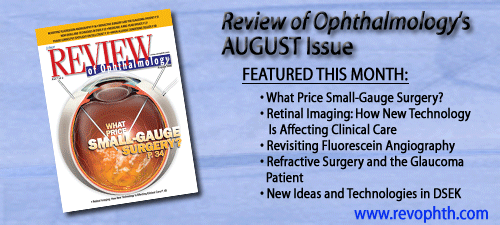
|
Volume 8, Number
30
|
Monday, August 11,
2008
|
| In this issue: (click heading to view article) | ||||
| Heritability of IOP: A Twin Study | ||||
| Vitreomacular Adhesion and AMD | ||||
| Effect of Topical Antiglaucoma Medications on the Lacrimal Drainage System | ||||
| Evidence of Shared Genes in Refraction and Axial Length | ||||
| Briefly | ||||

|
||
 |
||
|
|||||||
 |
||
BRIEFLY
|
|
|
|
||||||||||||||
|
||||||||||||||
| Subscriptions:Review of Ophthalmology
Online is provided free of charge as a service of Jobson
Professional Publications Group, a division of Jobson Medican Information LLC, 11 Campus Blvd., Newtown Square, PA 19073. If you enjoy reading Review of Ophthalmology
Online, please tell a friend or colleague about it. Forward
this newsletter or go to www.jobson.com/globalemail/ to sign up. To
change your subscription, reply to this message and give us your
old address and your new address; type "Change of Address" in the
subject line. If you do not want to receive Review of
Ophthalmology Online, click here. Advertising: For information on advertising in this e-mail newsletter or other creative advertising opportunities with Review of Ophthalmology, please contact publisher Rick Bay, or sales managers James Henne, Michele Barrett or Kimberly McCarthy. News: To submit news, send an e-mail, or FAX your news to 610.492.1049 |














